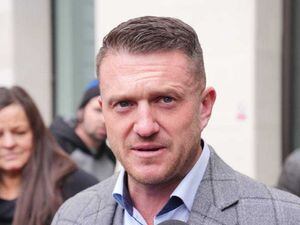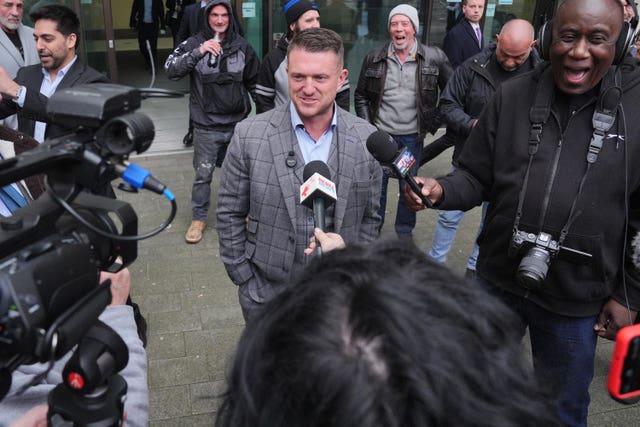Tommy Robinson cleared of refusing to leave march after police paperwork error
The senior Metropolitan Police officer who signed the dispersal order admitted it may not have been lawful.

Tommy Robinson has been cleared of breaching a dispersal order after a judge ruled the power had not been legally authorised by police.
The controversial activist, 41, whose real name is Stephen Yaxley Lennon, was arrested at a march against antisemitism near the Royal Courts of Justice in London, where the demonstration began, after organisers said he would not be welcome at the event.
On Monday, the senior Metropolitan Police officer who signed the dispersal order admitted it may not have been lawful after he used the wrong date on the paperwork.
Inspector Parker-Phipps, whose laptop battery was “dying”, put the order in place at 10am on November 26, but accidentally dated the form for November 24.
Mr Robinson’s defence lawyer Alisdair Williamson KC told the court there had been a “litany of catastrophic errors” in the Met’s handling of the incident.
Questioning the inspector, Mr Williamson said: “This document is not correct is it?
“Can we have any confidence that there was a lawful order in place?”
The officer replied: “No.”
Giving his ruling, District Judge Daniel Sternberg said: “I am not satisfied there was a legal authorisation.
“There is no case for you to answer.”

During his arrest, officers sprayed Mr Robinson with synthetic pepper spray and handcuffed him.
He uploaded a video of himself with partially closed eyes to social media after the incident.
Other footage of him arguing with police officers was also posted on his X account, with Mr Robinson claiming to be present as a journalist at the march.





